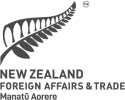Supply Chains:
On this page
Summary
The New Zealand Customs Service conducted a Time Release Study during a week in September 2022.
A Time Release Study is a World Customs Organization method of measuring customs performance in clearing cargo moving across the border, measuring the times of various events and procedures from arrival to release to market.
Customs is just one component in the supply chain and there are myriad factors affecting the international movement of cargo. By measuring performance, it is possible to establish a baseline of indicators, assess effectiveness and identify improvements which help grow the economy by not delaying the delivery of trade.
During this week, Customs analysed data from 12,112 import entries and 5,267 export entries across both sea and air cargo that arrived or departed from New Zealand seaports and airports.
The study also used data from industry partners involved in border clearance, including port and air freight companies.
Key results
Import entries that are correctly reported are cleared fast and on average before the arrival of the vessel carrying that cargo.
Exports entries that are correctly reported are cleared in advance of loading for export.
| Total VFD | Total Payable | |
|
Sea Cargo Import FCL Air Cargo Import |
$400,094.738 $141,139.421 |
$80,137.995 $22,880.839 |
| Total FOB | Total Drawback | |
|
Sea Cargo Import FCL Air Cargo Import |
$685,589.392 $66,281.651 |
$104,318 $28,802 |
Sea cargo
91.5% of import entries for full containers were lodged and released by Customs before arrival into New Zealand.
91.3% of export entries for full containers were lodged 48 hours before loading.
End-to-end-timelines
The following diagrams show average processing and movement times for cargo studied during the TRS week. Times for reporting and customs status are overlaid on the physical transport process.
Sea cargo imports (for FCL)
Sea cargo exports (for FCL)
Air cargo
67% of import entries for air cargo were lodged and released by Customs before arrival into New Zealand.*
99.1% of export entries for air cargo were cleared before the departure time of the aircraft.
*On average, import entries for air cargo were lodged and released by Customs 8.5 hours after the arrival of the aircraft. This reflects the much shorter flight times from an overseas departure point to the aircraft landing.
Air cargo imports
Air cargo exports
Customs has efficient systems in place to ensure we can process cargo easily
and quickly through the border. This includes:
- electronic reporting
- a risk management and alerts system
- deferred payment and credit facility system
- post-entry auditing capability
- ongoing engagement with industry
If goods are reported to us correctly, they are cleared in seconds.
Findings from this study will be shared with the World Customs Organization and industry.
To read the full report visit the NZ Customs website(external link).
The following cargo types were excluded from this study: commercial goods with a customs value of less than $1,000; cargo that was not matched across all the datasets, transhipments, goods cleared by ECI, transit cargo, cargo moved under bond, coastal cargo, exempt goods, diplomatic goods,
military goods, empty containers, personal effects, ships stores, mail, and break-bulk. Bulk vessels were also excluded.
More reports
View full list of market reports
If you would like to request a topic for reporting please email exports@mfat.net
Sign up for email alerts
To get email alerts when new reports are published, go to our subscription page(external link)
Learn more about exporting to this market
New Zealand Trade & Enterprise’s comprehensive market guides(external link) cover export regulations, business culture, market-entry strategies and more.
Disclaimer
This information released in this report aligns with the provisions of the Official Information Act 1982. The opinions and analysis expressed in this report are the author’s own and do not necessarily reflect the views or official policy position of the New Zealand Government. The Ministry of Foreign Affairs and Trade and the New Zealand Government take no responsibility for the accuracy of this report.

